Edinburgh - Leigh
Wednesday May 21 - Our Edinburgh AdventureSufficiently sick of driving, we decided to take the train to Edinburgh and spend the day within the city centre. Definitely not a cheap way to travel, at £62 for the pair of us, return. However, we don’t know how much it would have cost us to park in the city and petrol isn’t cheap either – especially if you convert to Aussie dollars – 74.9 per litre sounds good until you realise that is pence not cents. Anyway, we got to watch the scenery go by and not have to worry about speed cameras and cars that pass you as if you are standing still while you are actually travelling at 70mph yourself.
We crossed the famous Fourth Rail Bridge (well I’m told it is famous but I had never heard of it until we got here). The Fourth of Tay is rather wide, wider than Sydney Harbour at guess so it is a massive expanse of bridge. A bit further along is the bridge used by the road traffic called, funnily enuff, the Forth Road Bridge. There is just so much water here – both on the ground and falling out of the sky. The once a year heave rain storm that we get in Adelaide happens here every second or third day. All the creeks and rivers have a torrent of water flowing down them, not the dried up rock paths we have at home that only see water for a couple of weeks a year.
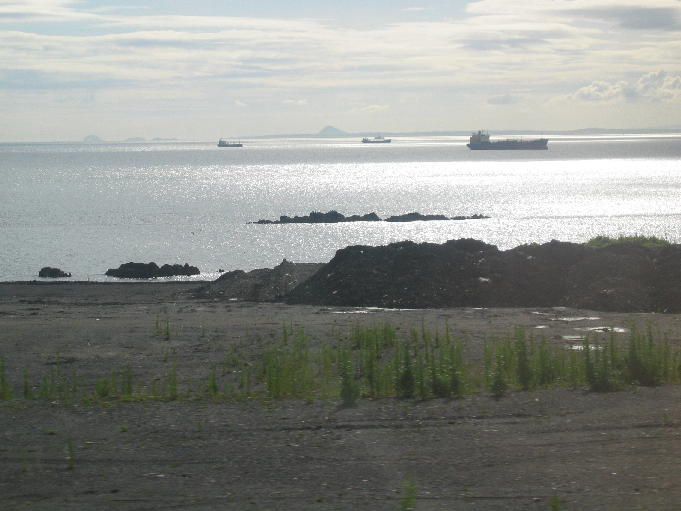
The train took us right into Waverly Station in the heart of Edinburgh. In the station they have ticket sellers for the ‘Hop On, Hop Off’ city bus so we purchased our tickets and walked up to Waverley Bridge (this one goes over train lines not water) to catch the bus. The scene is just amazing. Layers, upon layers up the hill of old elegant buildings of different shapes and sizes. A photo describes this much better than we ever could.
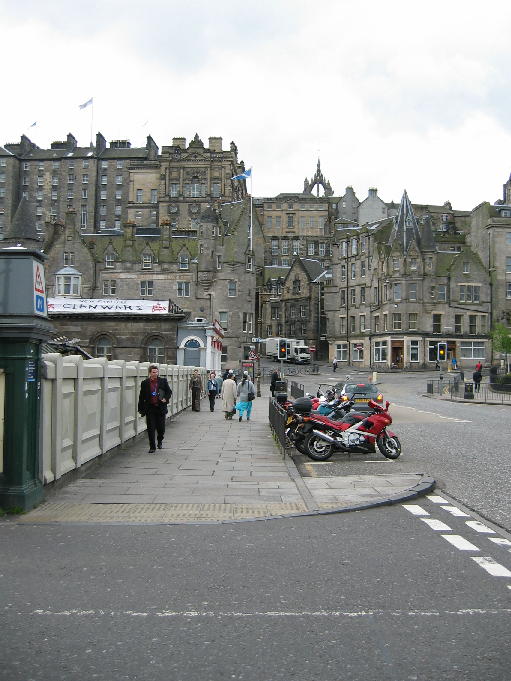
Onto the bus, a bright red, open top double-decker bus with audio commentary in seven languages, that does a city loop near all the major attractions. Past the Walter Scott monument and down Princes Street which, Kaye was told – and did refrain – is a shoppers dream for Scottish treasures and tartan. Still more amazing buildings, not least of which is the Caledonian Hotel, St John’s Church and St Cuthbert’s Church.
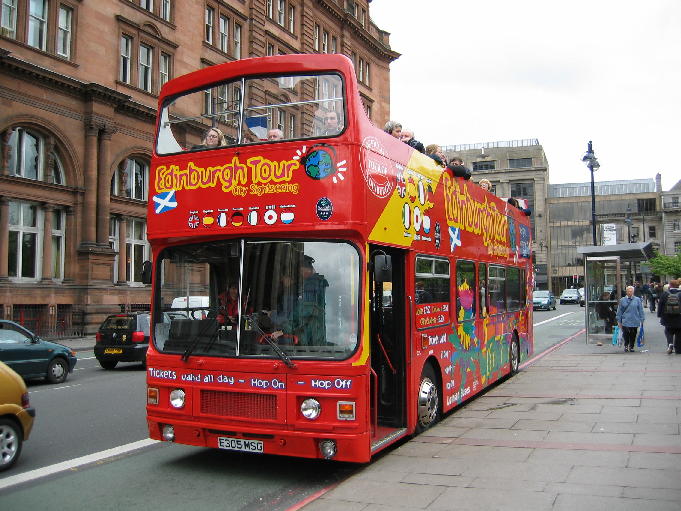 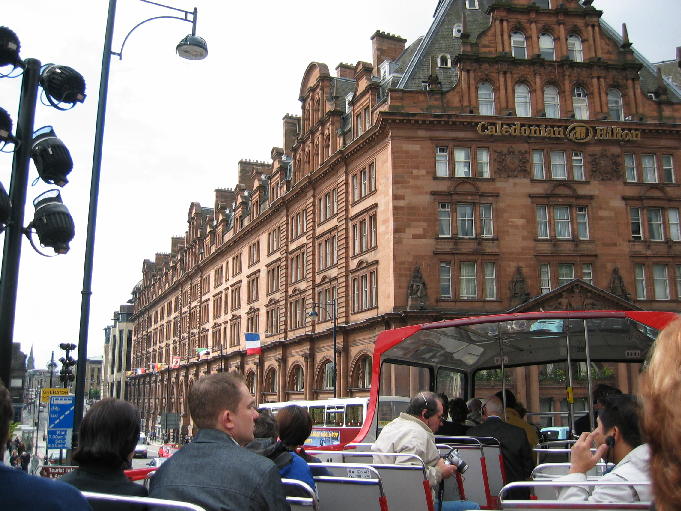
Around the corner to Grassmarket, and yes, more great buildings including the Last Drop Pub where convicted persons would be taken for their last drink of scotch before being hung - ironic considering scotch is also known as the water of life!
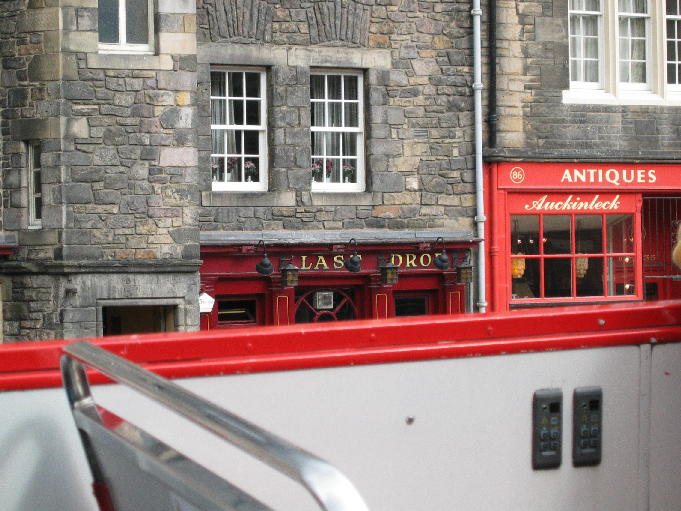
Around another corner to Greyfriar’s Bobby and the pub named after him. It is an old story about a dog that stoically guarded his master’s grave after he died. You’ll have to read the full story for yourself as I don’t think it is timely to tell it here.
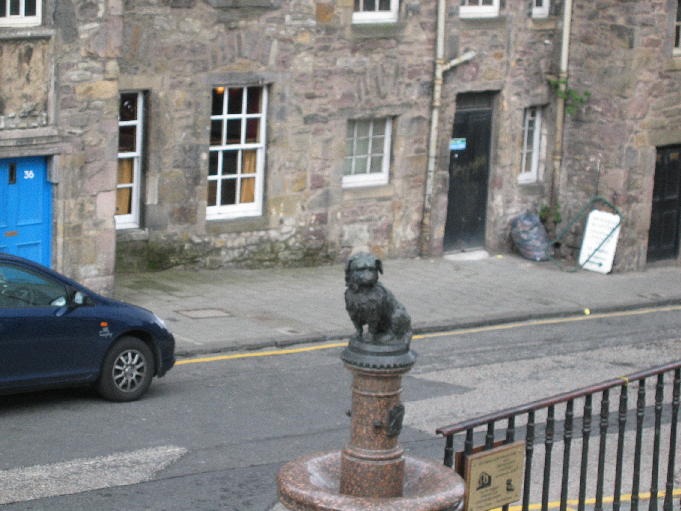
Next McEwan Hall, the Royal Infirmary, the George Heriot’s School and then the Old Fire Brigade HQ.

When the bus stopped alongside Edinburgh Castle we hopped off. Past the Scottish Parliament Building (while they wait for their new home to be built which is going to take ages), and started up Castle Hill, the western end of the Royal Mile up to the castle itself. The carpark is where they hold the military tattoo, and contrary to the view of TV, it is rather steep not flat, and covered in cobblestones that aren’t that easy to walk on. Knowing what I do now it will be interesting to take another look at a tattoo.
  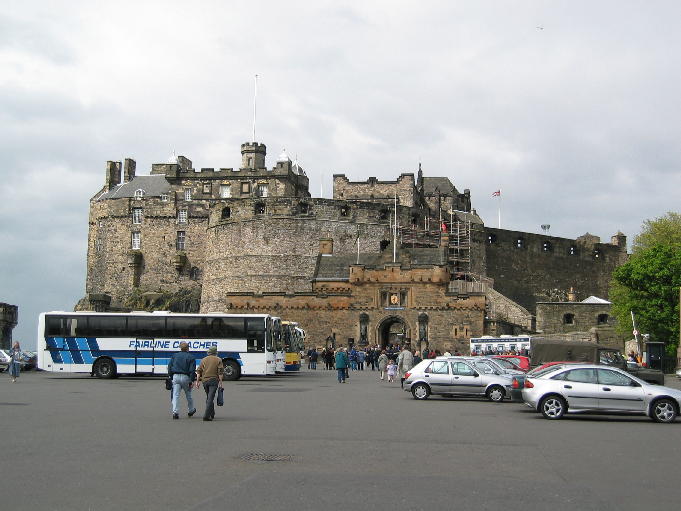
Tickets in hand, we made our way between the two guards, (I would hate their job – I can’t stand still for 10 seconds let alone 2 hours with only a little military march to break the monotony every 10-15 minutes) and through the first of seven gates. The ditch we crossed was not a moat, it was never filled with water, so any landing in it from above would have been rather hard.
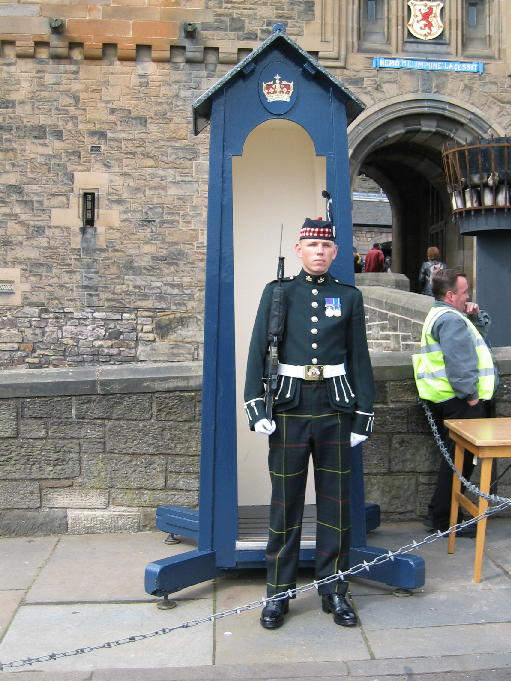
John was our guide for the tour and he had learned to slow down his speech so we foreigners could understand him, but he still had his distinctive scottish accent. The inner fort walls were from the 1700s and we continued through more of the gates. The entire path was cobblestone, with a narrow strip of smaller cobblestones so the horses could get a grip under their hooves.
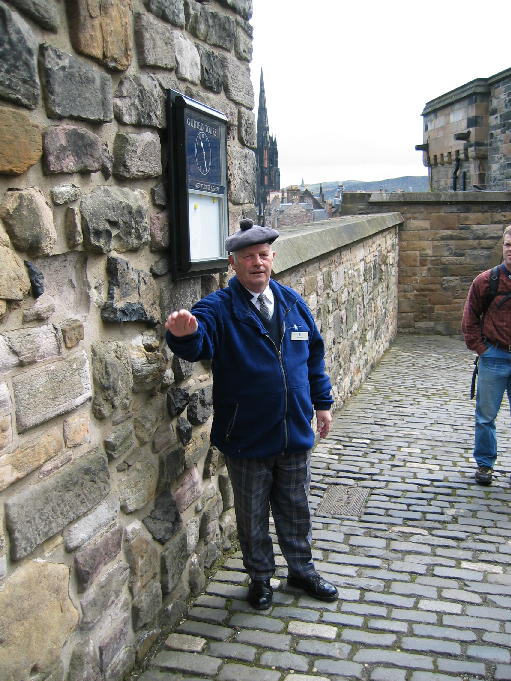
There are a number of cannons spread around the top of the walls of the half-moon battery, none of which have been fired in anger. Previously, they were used for salutes but even that has stopped now. The only cannon that is fired today is the one o’clock gun - a 120mm howitzer which makes a hell of a noise when it goes off - we were present for this at the end of our visit. The story goes that when asked why one o’clock and not noon, as seems to be the worldwide consensus, the reply was ‘well, this is Scotland – and one shell costs a lot less than 12!’. The veracity of this story was not revealed to us – but it is a great story nonetheless.
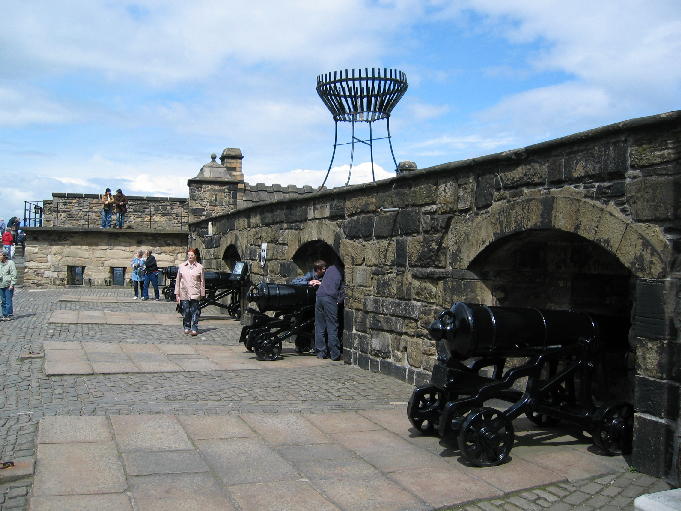
Many parts of the castle are in a process of renovation and extension so some parts were not open to us. Most were related to the military side of the Royal Scots Guards who supply the soldiers that stand guard at the gates etc and the military history of the guards and the Scottish military in general.
Through the last gate, Foog’s Gate from the 7th century, to St Margaret’s Chapel, the oldest building in the castle, which 900 years later is still in use - members of the castle guard can get married here, which our guide said was always a happy occasion for the father of the bride, because the church can only hold 20 guests :) :) :).
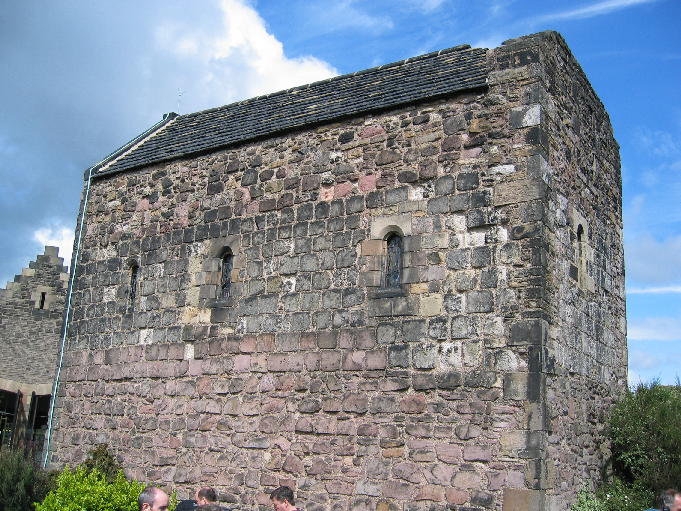
Crown Square is at the end of the path. One building is being renovated into yet another shop – but larger this time :) Another building is the only Scottish war memorial in the country. A third is home to the Honours of Scotland and the Stone of Destiny - Scotland's equivalent to the Crown Jewels.
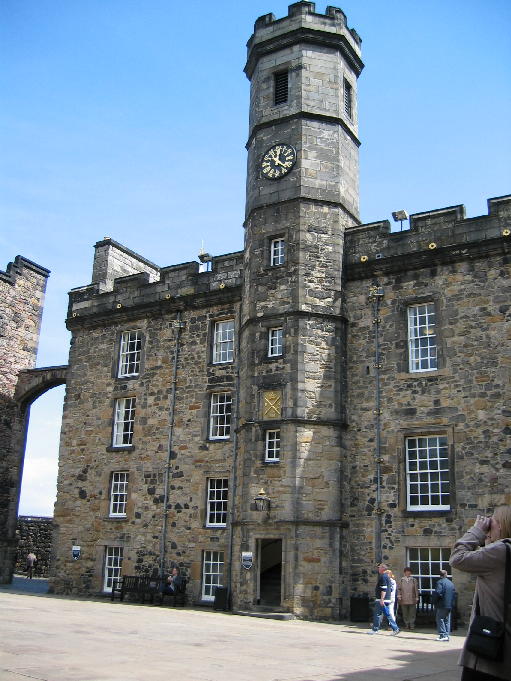
The Honours of Scotland - the Crown, Sceptre and Sword of State - are the oldest royal regalia in the UK. They wer shaped in Scotland and Italy during the reigns of James IV and James V and were first used together for the coronation of Mary Queen of Scots at Stirling Castle in September 1543.
From the time they were taken from from the castle in 1650 for the coronation of Charles II at Scone, they have had the most eventful history. For almost ten years they were preserved from the clutches of Oliver Cromwell. After the 1707 Treaty of Union between Scotland and England, the Honours were locked away in an oak chest for 111 years until Walter Scott had them removed in 1818.
Today they're displayed in the castle under heavy guard - stored in a sealed glass cabinet which stands from floor to ceiling, all inside a walk-through vault with two huge doors at each end. Sadly no photography is allowed in the vault, so you'll have to use your imagination :)
The Stone of Destiny has served as the seat on which Scottish kings had been enthroned until the English king, Edward I, forcibly removed it from it's ancient site in Scone Abbey, near Perth, in 1296. It was taken to Westminster Abbey and enclosed within the Coronation Chair - for nearly 700 years thereafter it was used in the ceremonies of the monarchs of England. It is now stored along side the sword, scepter and crown in the vault described above and only returns to Westminster Abbey for coronations.
Security of the Honours seem to be a major factor these days, probably related to the fact that, in 1950, four Scottish students removed the Stone of Destiny from Westminster Abbey - three months later it turned up 500 miles away at the front door of Arbroath Abbey, in Angus!
We stopped for lunch at the restaurant near the One O'Clock Gun and, just before 1pm, I stood ready for a great photo opportunity - when the howitzer went off, I swear I felt every ounce of my body shake from the shock wave made by the explosive noise of the gun firing - and that's a lot of shaking!
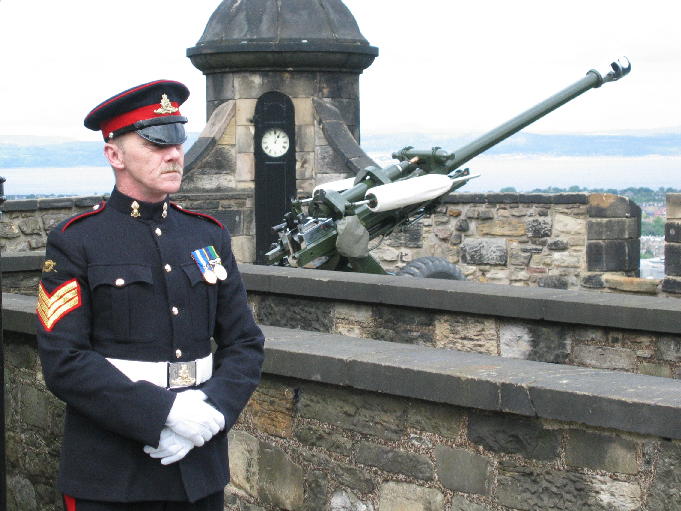 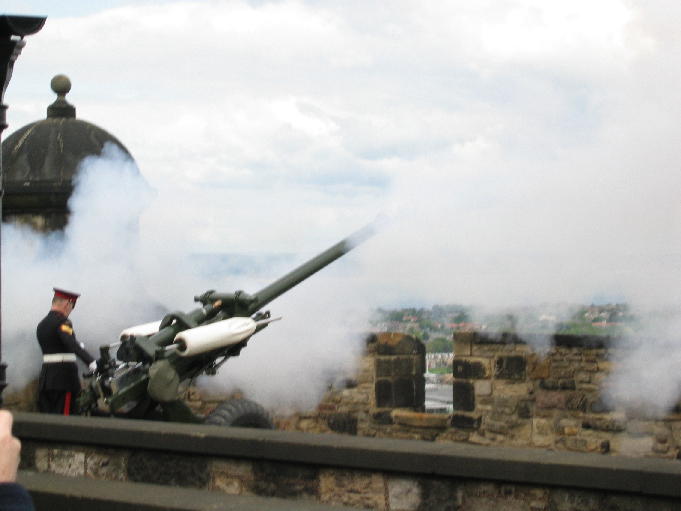
After leaving the castle, while Kaye visited the Tartan Museum and factory, I went down the Royal Mile to the Camera Obscura centre and had fun walking through their displays of strange and interesting photographic stuff including giant fibre optic kaleidoscopes, holograms, video morphing machines and other fun stuff. At the top of the building, they have a viewing platform providing almost uninterrupted 360' views of Edinburgh.
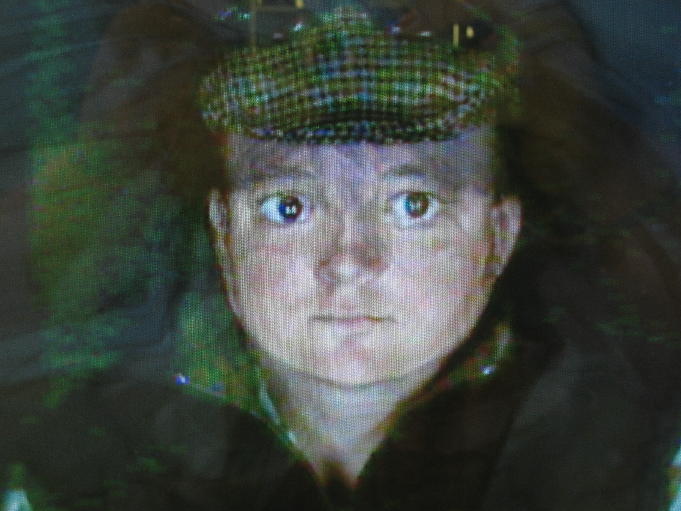
Back on the bus again and we headed off down the Royal Mile towards the Royal Palace. Someone was in residence, so it was closed for the day.

The bus finished the tour of the city back on Waverly Bridge but we hopped back onto another bus to head around the corner via a post office and bank to Charlotte Square where another National Trust georgian home was on display.
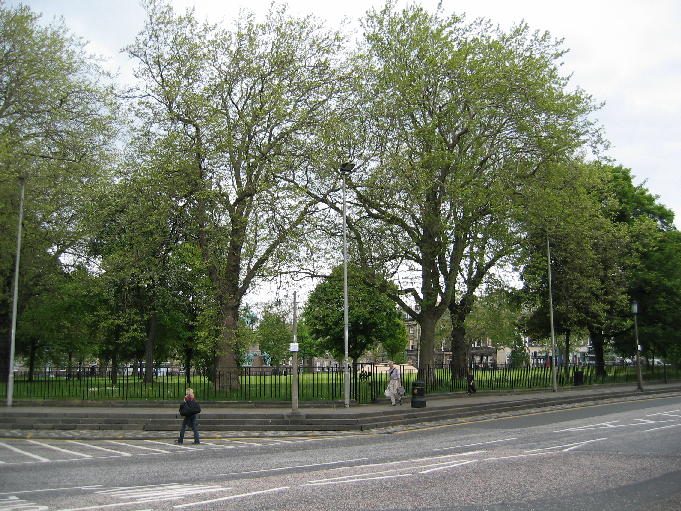
Tired, yet content with a great day out in Edinburgh, we wandered back to the Waverly train station and caught the 1740 home to Aviemore - 2.5 hours later Kaye was tucking into a steak at the Cairngorn while I read a few more chapters of a book - after which we retired for the night.
22/05/2003 3:50:51 PM
Previous 1 | Start | 1| 2| 3| 4| 5| 6| End | Next 1 |
|
Copyright © Dotat Communications 2002 - 2003
|
|
|
|